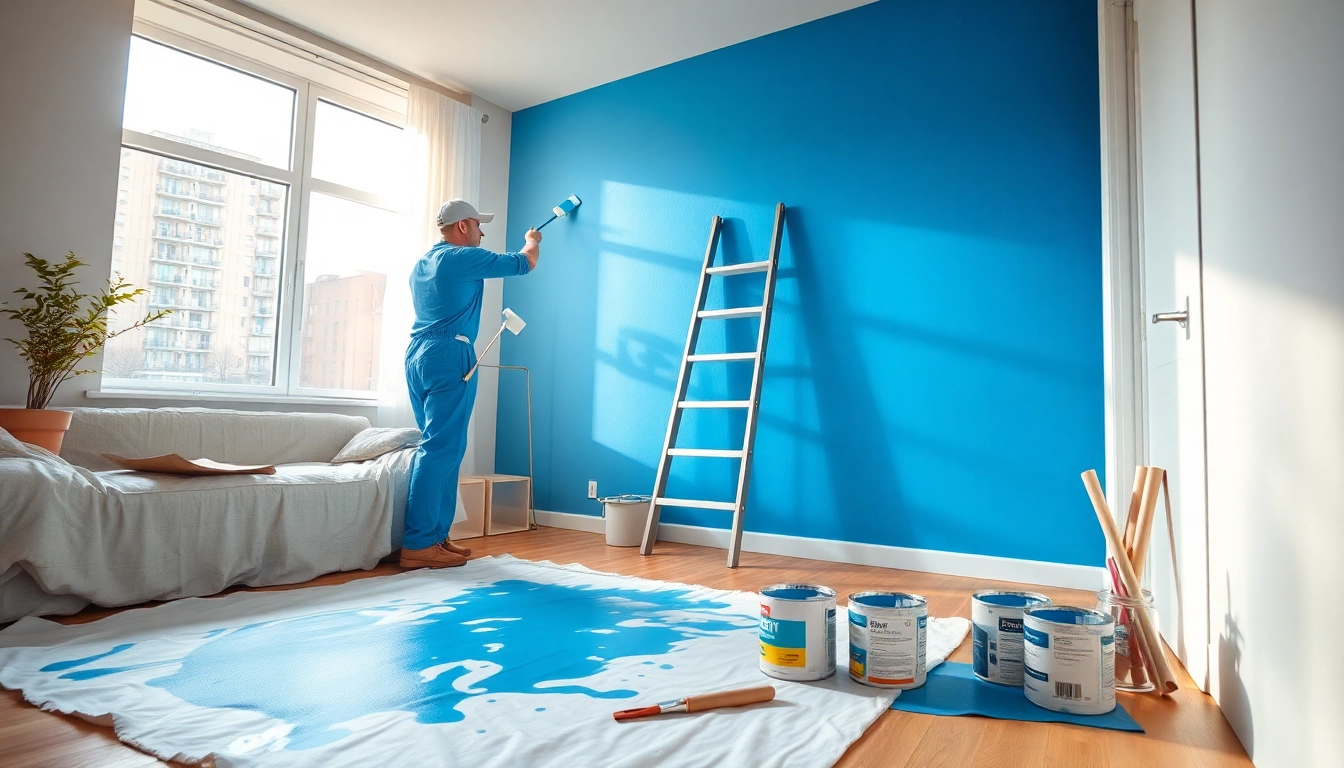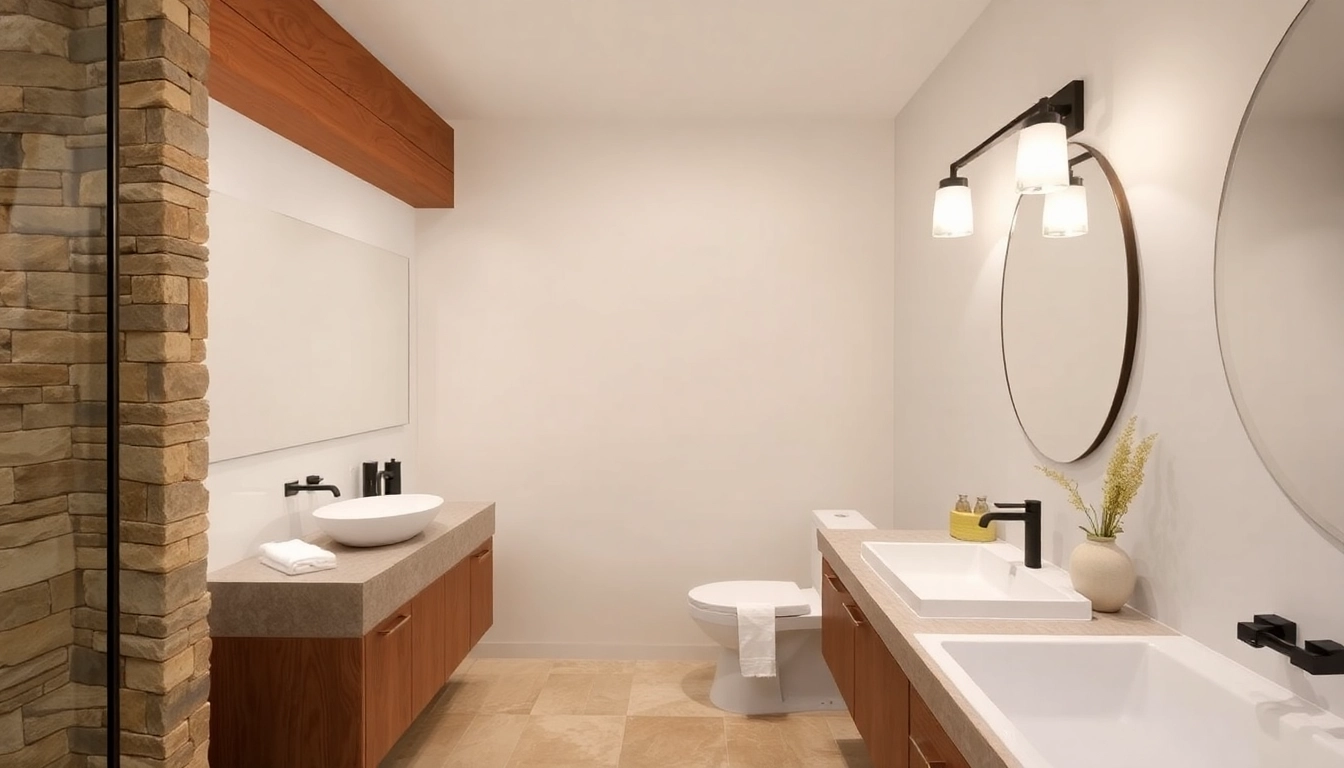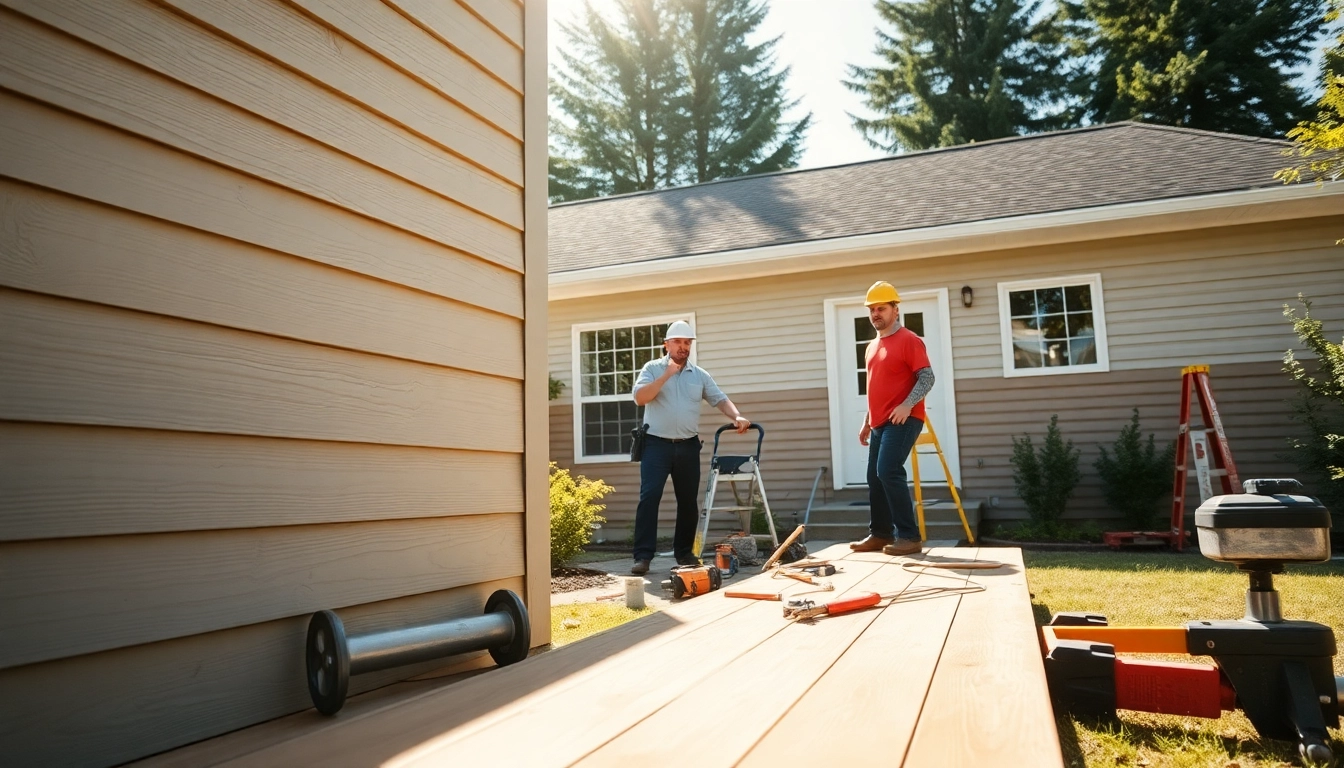Understanding Interior Painting: Basics and Importance
What is Interior Painting?
Interior painting refers to the process of applying paint to the interior surfaces of a building, including walls, ceilings, doors, and trims. This fundamental aspect of interior design not only enhances the aesthetics of a space but also protects surfaces from wear and tear, moisture, and other environmental factors. Whether it’s a single room or an entire house, interior painting can dramatically alter the mood and perception of a space, making it feel more inviting and personalized.
Benefits of Professional Interior Painting
Engaging professional services for interior painting has numerous advantages:
- Expertise: Professional painters bring a wealth of experience and knowledge on the best painting techniques, tools, and materials to use, ensuring high-quality results.
- Time-Saving: Painting can be time-consuming, especially for comprehensive projects. Professionals can complete tasks faster while maintaining quality, allowing homeowners to focus on other aspects of their day.
- Safety: Interior painting can involve the use of ladders, scaffolding, and potentially hazardous materials. Professionals are trained to handle these safely, reducing the risk of injury.
- Finish Quality: A professional job often results in a smoother and more even finish compared to DIY efforts, enhancing the visual appeal of the space.
- Proper Preparation: Skilled painters know how to prepare different surfaces correctly, including repairs to walls and choosing appropriate primers and paints.
Common Interior Painting Mistakes to Avoid
While interior painting can seem straightforward, several common pitfalls can lead to unsatisfactory results. Being aware of these can save time and resources:
- Skipping Surface Preparation: Skipping cleaning, patching, or priming can cause paint to adhere poorly, leading to chips and peeling later on.
- Choosing the Wrong Paint: Not all paints are suitable for every surface or environment. Choosing the incorrectly specified paint can compromise durability.
- Ignoring Lighting Conditions: Colors may appear differently under varying lighting conditions. Failing to consider this can lead to disappointing results.
- Poor Rolling Techniques: Using the wrong roller nap or application technique can result in uneven coverage and texture.
Choosing the Right Paint: Types and Finishes
Different Types of Paint for Interior Use
When it comes to interior painting, understanding the different types of paint available is crucial:
- Acrylic Paint: Water-based and easy to clean, acrylic paint is versatile, offering durability and quick drying times, making it suitable for various interior applications.
- Oil-Based Paint: Known for its rich finish and durability, oil-based paint is often used for trim work and cabinetry, but takes longer to dry and requires solvents for cleaning.
- Latex Paint: This water-based paint provides excellent coverage, is very easy to clean, and is ideal for a variety of surfaces, including walls and ceilings.
Importance of Paint Finish in Interior Painting
The finish of the paint plays a crucial role in both the look and performance of painted surfaces:
- Matte: Offers a non-reflective finish that can hide imperfections but is less washable.
- Satin: Provides a soft sheen and is more durable than matte finishes, making it a popular choice for living areas and hallways.
- Semi-Gloss: Highly durable and easy to clean, semi-gloss is perfect for high-traffic areas and trim but can highlight surface imperfections.
- Glossy: Extremely reflective and durable, glossy finishes are often used in kitchens and bathrooms where moisture resistance is key.
Eco-Friendly Paint Options
With increasing awareness of environmental issues, eco-friendly paint options have become widely available. These include:
- Low-VOC Paints: Volatile Organic Compounds (VOCs) can emit harmful fumes. Low-VOC or zero-VOC paints minimize health risks while reducing environmental impact.
- Natural Paints: Made from natural ingredients, these paints are safe for health and the environment, often coming in vibrant, earthy tones.
- Recycled Paint: Produced from leftover paint, recycled options can be a cost-effective and sustainable choice for eco-conscious homeowners.
Planning Your Interior Painting Project
How to Estimate the Cost of Interior Painting
Budgeting for an interior painting project involves several factors, including:
- Room Size: Larger areas will require more paint and labor, raising costs.
- Type of Paint: Premium paints cost more but can offer better results and durability, often a worthy investment.
- Location: Prices can vary significantly based on geographic location, local labor rates, and paint availability.
As a general guideline, the cost to paint an average room can range from $300 to over $1,000, depending on these factors.
Preparing Your Space for Interior Painting
Proper preparation is key to a successful interior painting project. Here are important steps to follow:
- Clear the Area: Remove furniture, decor, and any other items that could obstruct the painting process.
- Clean Surfaces: Dusting and cleaning the walls will help paint adhere better.
- Repair Wall Imperfections: Fill in holes and cracks to ensure a smooth finish.
- Protect Non-Painted Areas: Use masking tape and drop cloths to protect areas from paint splatters.
Tools and Supplies Needed for Interior Painting
Having the right supplies can make or break your painting project. Essential tools include:
- Paint Rollers and Brushes: Different sizes for different applications ensure even coverage.
- Paint Trays: For ease of access and to avoid messes.
- Ladder or Step Stool: To reach high areas safely.
- Drop Cloths: To protect flooring and furniture.
- Painter’s Tape: To achieve clean lines around trim and edges.
Techniques for Interior Painting Success
Best Practices for Painting Walls and Ceilings
Implementing effective techniques is crucial for a professional finish:
- Start with the Ceiling: Begin at the top and work down. This prevents splatters on freshly painted walls.
- Edging: Use a brush to cut in along edges for clean transitions to adjoining walls or ceilings.
- Roll in Sections: Work in 3×3 foot sections to ensure even coverage and wet edges to avoid roller marks.
Using Color Effectively in Interior Painting
Color can dramatically influence perceptions of space. Consider the following when choosing colors:
- Light Colors: Can make small rooms feel larger and more open.
- Dark Colors: Create a cozy, intimate atmosphere but may make a room feel smaller.
- Complementary Colors: Choosing colors that work well together can enhance the interior decor.
Framework for Creating Accent Walls
Accent walls add character to a space. To achieve this:
- Choose a Focal Point: An accent wall should draw attention; choose walls that highlight artwork or furniture.
- Select a Bold Color: Opt for a vibrant color that contrasts with surrounding walls.
- Use Patterns or Textures: Consider using patterned wallpaper or textured finishes for added visual interest.
Post-Painting: Care and Maintenance
How to Maintain Your Painted Walls
Keeping painted surfaces in good condition requires ongoing care:
- Regular Cleaning: Dust and dirt can build up over time. Wipe down walls with a soft cloth or sponge.
- Spot Cleaning: Address stains immediately using appropriate cleaning methods to prevent permanent damage.
- Touch-Ups: Keep leftover paint for quick touch-ups, particularly in high-traffic areas.
Signs You Need a Fresh Coat of Paint
Recognizing when it’s time to repaint can maintain your home’s aesthetics:
- Fading Color: If the color appears dull or faded, it may be time for a refresh.
- Peeling or Cracking: These are signs of inadequate adhesion and can affect the integrity of the surface.
- Stains or Water Damage: Dark stains, particularly from water, indicate that the paint is no longer effective in protecting surfaces.
Tips for Touch-Ups and Repairs
When it comes to touch-ups and repairs:
- Use a Small Brush: For precise applications, especially around edges or hard-to-reach areas.
- Blend Well: Feather the paint to help it blend into the surrounding area, ensuring a seamless appearance.
- Follow Up with a Clear Sealer: In high-traffic areas, applying a clear coat over the touch-up can add durability.



